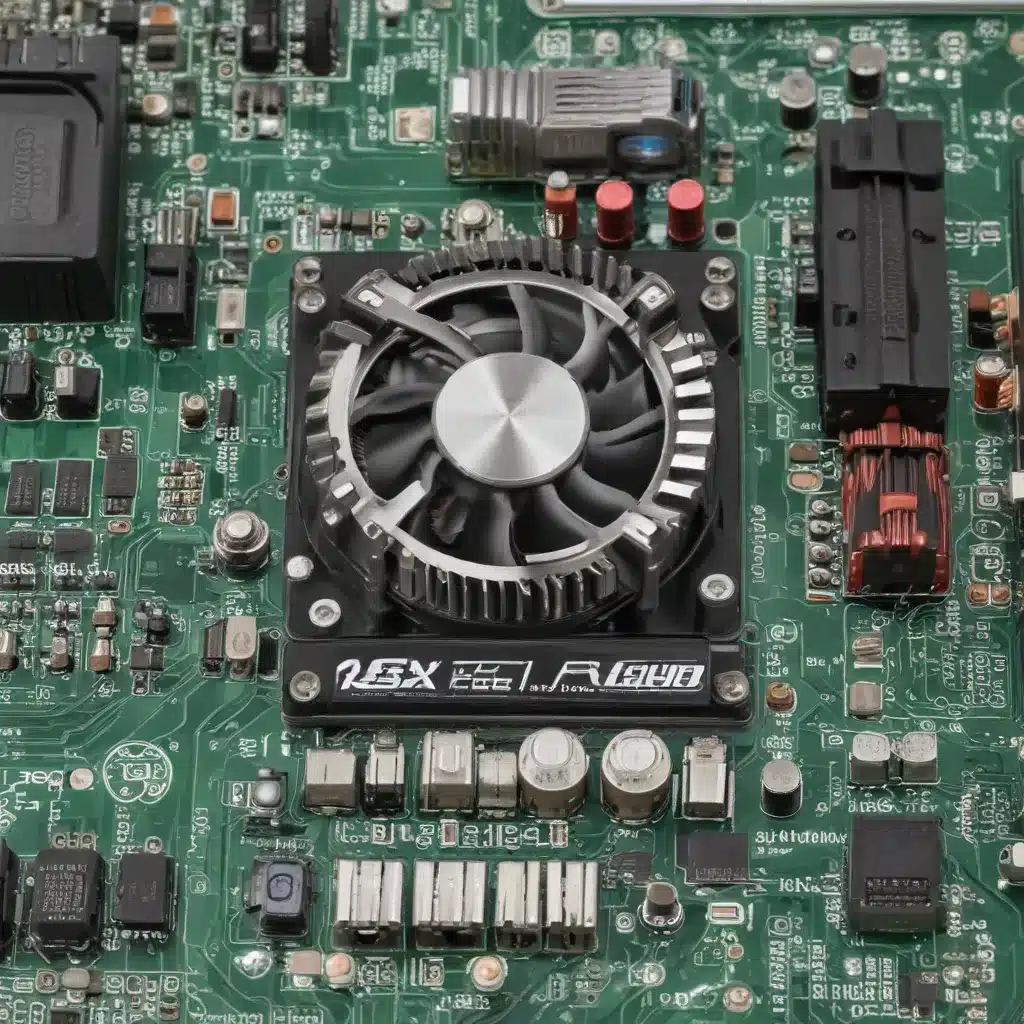
Understanding Sound Card Anatomy and Common Failure Points
Sound cards are essential components in modern computers, responsible for converting digital audio signals into analog waveforms that can be played through speakers or headphones. While these vital peripherals are generally reliable, they can experience various issues over time due to aging components, electrical surges, or physical damage. As an experienced IT professional, I’ve encountered numerous sound card problems and developed a systematic approach to diagnosing and resolving these common failures.
To understand the potential points of failure, let’s first examine the key components of a typical sound card:
-
Digital-to-Analog Converter (DAC): The DAC chip is responsible for converting the digital audio data into an analog waveform. Failure of the DAC can result in distorted, crackling, or absent audio output.
-
Amplifier Circuits: Sound cards often have dedicated amplifier circuits to boost the analog signal before it is sent to the output jacks. Issues with these amplifier components can lead to volume inconsistencies, distortion, or complete audio failure.
-
Clock Generators: Sound cards rely on precise clock signals to maintain accurate timing and synchronization of the audio data. Malfunctioning clock generators can cause audio playback problems, such as glitches, dropouts, or pitch variations.
-
Capacitors and Resistors: Electrolytic capacitors and resistors on the sound card’s circuitry can deteriorate over time, leading to various audio issues, including noise, hum, or loss of functionality.
-
Connectors and Solder Joints: Deteriorating or loose connections on the sound card’s input/output jacks, power connectors, or solder joints can disrupt the audio signal path and cause intermittent or complete audio failure.
Understanding these potential failure points will guide us in our systematic troubleshooting process.
Diagnosing Sound Card Issues
When faced with a malfunctioning sound card, it’s crucial to methodically diagnose the problem to identify the root cause and implement the appropriate solution. Here’s a step-by-step approach to diagnosing sound card failures:
1. Verify Basic Functionality
Start by ensuring that the sound card is properly installed and recognized by the operating system. Check the following:
- Verify that the sound card is securely seated in the PCI or PCIe slot and the connectors are firmly in place.
- Ensure the sound card is enabled and not disabled in the device manager or BIOS.
- Confirm that the correct sound card drivers are installed and up-to-date.
2. Inspect the Hardware
Carefully examine the sound card’s physical condition, looking for any obvious signs of damage or deterioration, such as:
- Bulging, leaking, or discolored capacitors
- Cracked or broken solder joints
- Visible damage to the PCB or integrated circuits
- Corrosion on the connectors or traces
3. Test Audio Outputs
Connect various audio output devices, such as speakers, headphones, or a multimeter, to the sound card’s outputs and test the audio quality. Listen for any distortion, crackling, or lack of volume. If the headphone output works but the speaker output is faulty, it may indicate an issue with the amplifier circuits.
4. Isolate the Problem
To narrow down the source of the issue, try the following:
- Test the sound card in a different computer to rule out compatibility or motherboard-related problems.
- Use a different set of speakers or headphones to ensure the issue is with the sound card, not the output devices.
- Try different audio playback software or games to determine if the problem is software-related or hardware-based.
5. Analyze Error Messages and Logs
Check the system event logs and any error messages related to the sound card. These can provide valuable clues about the nature of the problem, such as driver conflicts, power issues, or hardware malfunctions.
Repairing Sound Card Failures
Once you’ve identified the root cause of the sound card’s malfunction, you can proceed with the appropriate repair strategy. Here are some common solutions:
1. Update Drivers and Software
If the issue is software-related, ensure that you have the latest sound card drivers and related software installed. Check the manufacturer’s website for any available updates or patches.
2. Replace Faulty Components
If the visual inspection or testing revealed damaged components, such as capacitors or resistors, you may need to replace them. This requires basic soldering skills and the availability of compatible replacement parts.
3. Repair Solder Joints
Loose or broken solder joints can often be the source of audio issues. Carefully inspect the sound card’s PCB and resolder any problematic connections.
4. Replace the Sound Card
In some cases, the sound card may be beyond repair, and the best solution is to replace the entire unit. This is particularly true for older or more specialized sound cards, where finding compatible replacement components can be challenging.
Preventive Maintenance and Best Practices
To extend the lifespan of your sound cards and prevent future failures, consider the following best practices:
- Regularly clean the sound card’s connectors and card edge with a contact cleaner to maintain good electrical connections.
- Ensure proper cooling around the sound card, as heat can accelerate the degradation of electronic components.
- Avoid subjecting the sound card to excessive static electricity, which can damage sensitive circuitry.
- Consider the use of sound card cages or brackets to provide additional physical support and protection.
- Regularly back up your sound card’s configuration settings to facilitate easy restoration in case of a failure.
By following these diagnostic and repair techniques, as well as implementing preventive maintenance measures, you can effectively maintain and troubleshoot sound card issues, ensuring optimal audio performance for your IT clients or personal systems. For more IT troubleshooting and repair resources, be sure to visit IT Fix.












